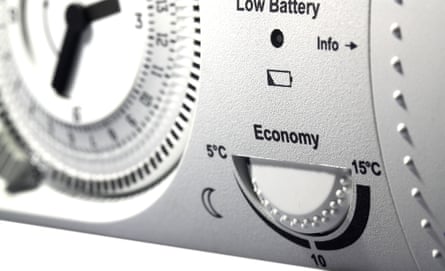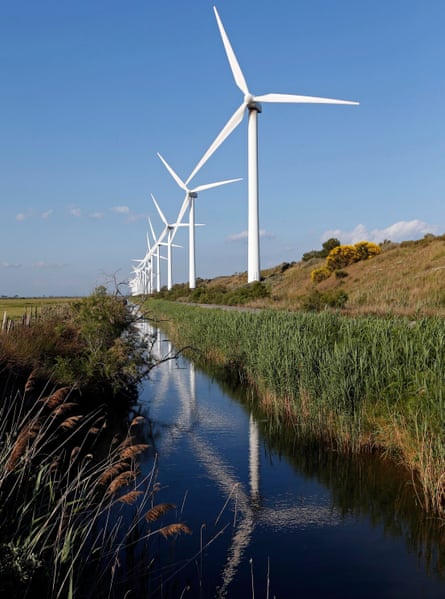In the next week Great Britain’s energy regulator will announce the steepest rise ever in its energy price cap, effectively saddling millions of households with an annual energy bill of close to £2,000.
The blow to household finances follows almost six months of record high energy market prices because of the global gas crisis. Despite the deepening gloom facing bill payers, ministers are yet to agree a package of measures to prevent a national energy crisis.
After a fourfold surge in energy market prices across Europe, households will pay an average of 54% more for energy this year than in 2020, according to Bank of America. The bank warned that the biggest increases would be felt by Italy and the UK.
While European governments have moved to protect households from the full brunt of the global energy crisis, the UK government has remained silent. The UK’s failure to act comes despite desperate calls from groups representing vulnerable households, small businesses and economists, which fear that record high energy bills threaten to unlock economy-wide inflation and a cost of living crisis.
Great Britain
In Great Britain the next energy price increase is scheduled to be announced on 7 February, and households will be hoping that new support measures can be agreed before it takes effect from 1 April.
Potential measures include cutting the 5% rate of VAT on energy bills, or moving the policy costs levied on energy bills to general taxation. More radical ideas include setting up a “stabilisation mechanism” to give top-up payments to energy suppliers depending on the market price. The Labour party has thrown its weight behind a plan to subsidise bills by introducing a windfall tax on the profits made by North Sea oil and gas producers during the crisis.
The Treasury is expected to remain tight-lipped on whether households can expect a reprieve until its spring statement in late March. But elsewhere in Europe, multibillion-euro deals are already offering households the reassurance that bill payers in Great Britain are hoping for.

The Netherlands
The Netherlands, like the UK, is highly reliant on gas for electricity generation and home heating. Unlike the UK, its government took action within weeks of energy markets reaching record highs to provide a multibillion-euro package of measures to protect households and small businesses.
The Dutch cabinet agreed in October to cut energy taxes in order to save households an average of €400 (£332.79) a year. In addition, some €150m is being set aside to boost home insulation. A further €500m will be used to compensate small firms in the form of lower energy taxes.
The measures, which will cost a total of €3.2bn, took effect from 1 January and will run for a year.

France
The French government also wasted no time in agreeing a package of measures to soften the blow of rising energy bills, after an increase in fuel duty in 2018 triggered widespread outcry over the cost of living and led to protests by the gilets jaunes (yellow vests).
The French government has already cut some electricity taxes to help slow the rise in home energy bills at an estimated cost to the state of €8bn. It will also use its powers to squeeze the state-owned electricity company EDF to lower the cost of electricity by charging well below the market rate for the electricity it generates.
EDF warned its investors that it would take an estimated €8.4bn (£7bn) financial hit from the plan.
Germany
In Germany, the government plans to lower energy bills by reducing the cost of supporting renewable energy projects.
From this year, the German government will cut a green surcharge that appears on home energy bills from 6.5 cents per kilowatt-hour to 3.7 cents. The government plans to cover the outstanding levies by using €3.3bn collected by the treasury via carbon taxes.
The state has also offered a €130m package of one-time grants to low-income households, which will be paid over the summer when households receive their bills from energy suppliers.
Spain
Spain’s government was one of the first to take action to protect households against a sharp rise in energy bills.
It agreed last September to remove taxes from home energy bills until May, which would instead be paid by enforcing a windfall tax on utilities that were poised to profit from soaring energy market prices.
The windfall tax is expected to raise about €2bn to soften the blow on households, and prevent Spain’s gas producers and electricity generators from raking in “unacceptable” profits during the crisis. The policy was seized upon by the UK Labour party as a model that could be applied to North Sea oil and gas producers.
Italy
Italian households pay some of the highest energy bills in Europe and can expect one of the steepest increases in energy bills because of the global gas crisis. In response, the Italian government has set out a plan to protect households against the rise in gas prices.
This includes cutting tax on gas for all consumers and reducing charges that finance subsidies for renewable energy, in addition to extra grants for low-income families. Overall, state support for struggling households is expected to reach €8.5bn through March this year.
Sweden
In Sweden, the government has set aside 6 billion kronor (£473m) to soften the impact of soaring electricity markets on home energy bills. Earlier this month, it announced plans for winter-bill subsidies of up to 6,000 kronor from December to February to about 1.8 million households whose power consumption tops 2,000 kilowatt-hours a month.
Norway
Norway’s government set out a series of measures to help bill payers totalling more than 8 billion kroner (£664m) in December, mainly consisting of direct subsidies for households.
Earlier this month, the Norwegian government promised to tackle the “socially unjust” effect of soaring energy bills by covering 80% of electricity costs when the market price for electricity is above 70 Norwegian øre (6p) per kilowatt-hour from January to March.

Denmark
The Danish government remains in talks to decide how much support it can offer towards household bills.
So far it has set aside 100 million kroner (£11.1m) to top up an existing scheme that aims to help vulnerable households. But the government is preparing to take action to help households most exposed to the global gas crisis: those who rely on gas heating or gas-fuelled district heating networks.
Approximately 800,000 households could receive a tax-free cheque from the government to help pay their energy bills. The exact amount has not yet been agreed by Denmark’s parliament.
